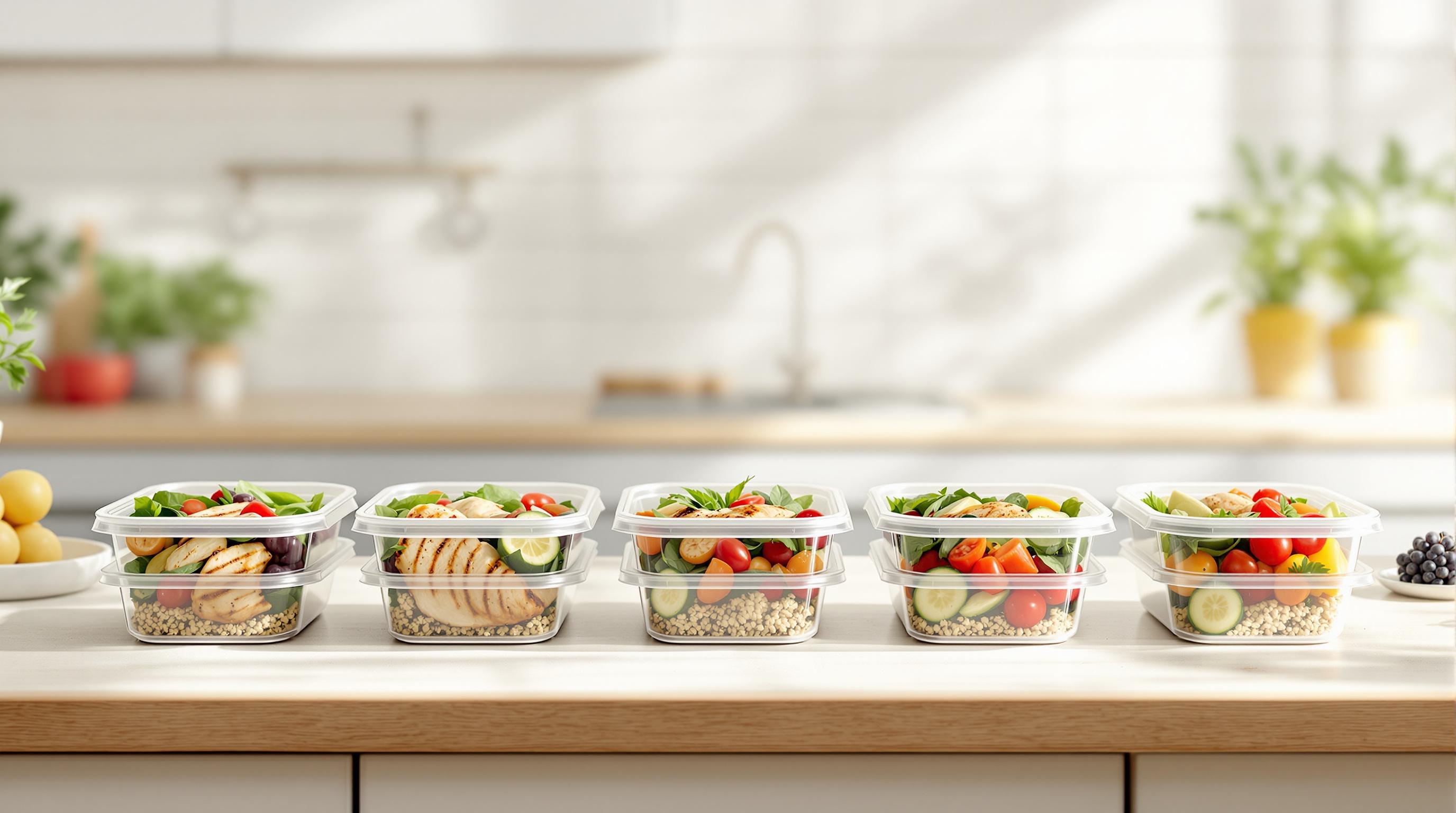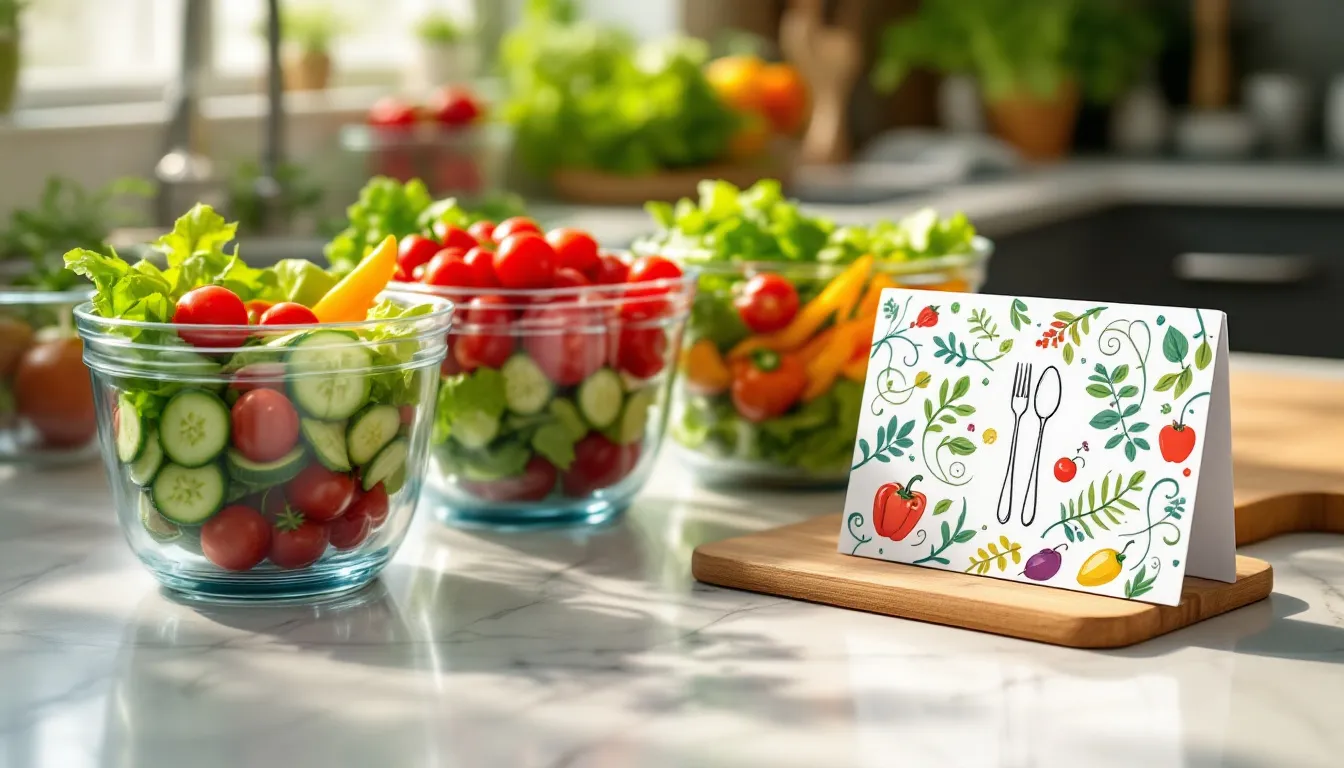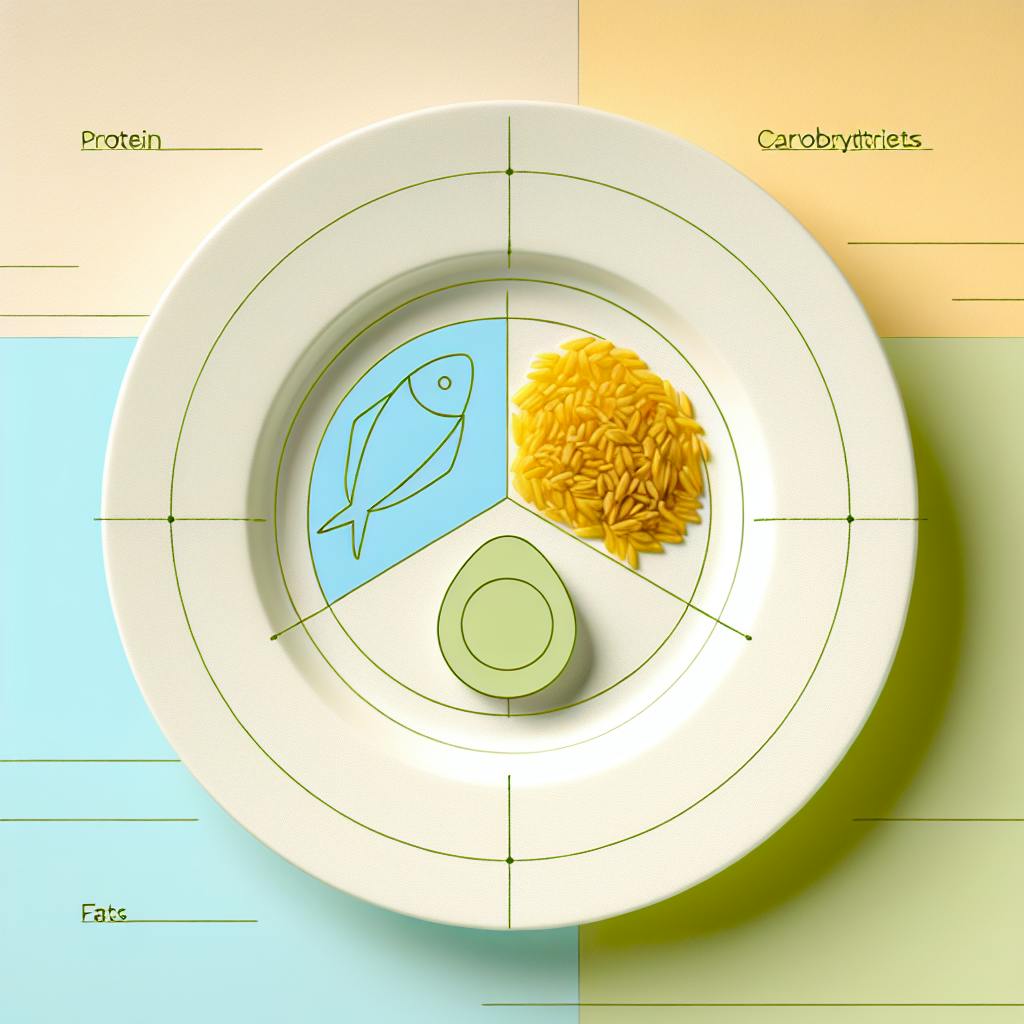90% of Americans consume too much sodium, and nearly half of adults are managing hypertension. Adding low-sodium meals to your meal prep service is a smart way to meet this growing demand while expanding your customer base. Here’s how to get started:
- Stick to FDA Standards: Low-sodium meals have 140mg or less sodium per serving.
- Swap Ingredients: Replace high-sodium items like soy sauce with alternatives like coconut aminos or fresh herbs.
- Add Flavor Without Salt: Use fresh herbs, acidic ingredients (like lemon juice), and spices to enhance taste.
- Label Accurately: Follow FDA guidelines for sodium content and serving sizes on nutrition labels.
- Leverage Tools: Use digital tools like Eat Fresh Tech to track ingredients, calculate sodium, and automate labels.
Offering low-sodium options can help you attract health-conscious customers, boost revenue, and stand out in the market.
Low-Sodium Meal Standards
What Counts as a Low-Sodium Meal?
Understanding sodium levels is key. The FDA defines sodium content with specific labels:
| Sodium Level Label | Sodium Content per Serving |
|---|---|
| Sodium-Free | Less than 5 mg |
| Very Low-Sodium | 35 mg or less |
| Low-Sodium | 140 mg or less |
| Reduced Sodium | At least 25% less than the regular version |
| Light in Sodium | At least 50% less than the regular version |
For meal prep businesses, sticking to the "low-sodium" category (up to 140 mg per serving) offers a good mix of flavor and health considerations.
Who Benefits from Low-Sodium Meals?
Low-sodium meals are ideal for people managing conditions like high blood pressure, heart disease, or kidney problems. They’re also a smart choice for anyone aiming to stay within the daily sodium limit of 2,300 mg recommended by health experts.
FDA Rules for Sodium Labeling

The FDA requires meal prep businesses to follow strict labeling guidelines for sodium content. These include:
- Listing the sodium amount per serving accurately
- Clearly showing serving size details
- Using sodium-related claims properly
- Including a full ingredient list that highlights sodium sources
To meet these standards, businesses often rely on digital tools to:
- Monitor the sodium levels of each ingredient
- Calculate total sodium per serving
- Produce precise nutrition labels
- Keep recipes consistent across batches
Creating Low-Sodium Recipes
Swap Out High-Sodium Ingredients
Many common ingredients are loaded with sodium, but you can make simple swaps to cut it down:
- Use coconut aminos instead of soy sauce.
- Trade bottled dressings for homemade vinaigrettes made with fresh herbs.
- Opt for fresh or frozen vegetables instead of canned ones.
- Make your own broth at home to avoid the sodium in packaged options.
- Skip pre-seasoned rice mixes and go for plain rice with fresh herbs for flavor.
Once you've made these swaps, it's time to add flavor without relying on salt.
How to Add Flavor Without Salt
You don’t need salt to make food taste amazing. Try these methods instead:
Fresh Herbs
- Sprinkle basil, oregano, thyme, cilantro, parsley, rosemary, or sage into your dishes.
- Add herbs at the end of cooking or use them as a garnish for a burst of flavor.
Acidic Ingredients
- Use fresh lemon or lime juice to brighten up your meals.
- Add apple cider or balsamic vinegar to dressings, marinades, or even soups.
Spices and Blends
- Italian twist: Blend oregano, basil, thyme, and rosemary.
- Mexican flair: Combine cumin, coriander, and chili powder.
- Asian-inspired: Mix ginger, garlic, and white pepper for a bold kick.
Low-Sodium Recipe Ideas
Put these tips into action with these flavorful, low-sodium meals:
Mediterranean Chicken Bowl
- Grilled chicken marinated with fresh herbs.
- Quinoa infused with herbs for added taste.
- Roasted veggies tossed in olive oil and seasonings.
- A light lemon-herb dressing to tie it all together.
Asian-Inspired Tofu Stir-Fry
- Tofu sautéed with ginger and garlic.
- Brown rice with a touch of sesame oil.
- A mix of fresh veggies stir-fried to perfection.
- Drizzle with coconut aminos for that umami flavor.
Southwest Beef Bowl
- Lean beef seasoned with cumin.
- Cilantro-lime rice as a fresh base.
- Topped with homemade pico de gallo.
- Avocado blended with herbs for a creamy sauce.
These recipes prove you don’t need salt to create meals full of flavor!
Ingredient Selection and Handling
Choosing Low-Sodium Foods
Stick to foods that are naturally low in sodium. Fresh produce is a better choice than canned, as fresh items typically have less than 5 mg of sodium per serving.
For proteins, focus on:
- Fresh, unprocessed meats
- Fresh fish and seafood
- Unsalted dried beans and legumes
- Plain, unseasoned tofu
- Fresh eggs
When it comes to grains and starches, go for:
- Plain brown or white rice
- Unseasoned quinoa
- Plain rolled oats
- Fresh potatoes
- Unsalted pasta
After selecting your ingredients, double-check their sodium levels by reading the labels.
Reading Labels for Sodium Levels
Nutrition labels are your best tool for keeping sodium intake in check. When reviewing packaged foods:
- Start with the serving size - sodium is often listed per serving, not for the entire package.
- Look for phrases like "sodium-free" (less than 5 mg per serving) or "very low sodium" (35 mg or less per serving).
- Watch out for additives such as monosodium glutamate (MSG), sodium nitrite, sodium citrate, and disodium phosphate.
Tools like Eat Fresh Tech’s software can simplify this process by tracking sodium levels in ingredients and calculating the total sodium content in finished dishes.
Proper Storage Practices
Once you’ve verified the sodium content, storing ingredients correctly is key to maintaining their quality and freshness.
Fresh Produce
- Keep most vegetables at 40°F (4°C).
- Store herbs in containers filled with water, covered loosely with plastic.
- Separate ethylene-producing items (like apples and bananas) from ethylene-sensitive produce.
Proteins
- Refrigerate fresh meats at or below 40°F (4°C) and use them within 1–2 days.
- Store dried beans and legumes in airtight containers in a cool, dry location.
Dry Goods
- Use airtight containers to store items like rice, oats, and pasta.
- Keep them in a temperature-controlled space below 70°F (21°C).
- Regularly check for signs of moisture or pests.
"Eat Fresh Tech has been invaluable, eliminating countless hours of manual label entry!" - Shane, John's Fit Meals
sbb-itb-3666cb4
Menu Planning and Implementation
Adding Low-Sodium Options
Incorporate low-sodium choices alongside your regular menu items. Clearly label these options to make them easy for customers to spot, and rotate a variety of low-sodium dishes weekly to keep the menu fresh.
Here are some ways to include low-sodium meals:
- Offer low-sodium versions of your top-selling dishes.
- Develop new recipes specifically designed to be low in sodium.
- Allow customers to customize their meals to reduce sodium content.
- Pair low-sodium entrees with complementary side dishes.
Be sure to document ingredient measurements and substitutions to maintain consistency across recipes. Adding these options not only satisfies customer preferences but also helps attract a broader audience.
Setting Meal Prices
Adjust meal prices to account for the added costs of premium ingredients and additional preparation. Include factors like ingredient sourcing, extra prep time, and any packaging or labeling expenses. Using digital tools can simplify the process of updating and integrating these pricing decisions into your menu.
Using Eat Fresh Tech for Menu Management

Streamline your menu management with tools like Eat Fresh Tech. This platform simplifies the creation and management of low-sodium menu items with features such as:
- Unlimited meal variations with customizable portions.
- Recipe management that ensures nutritional accuracy.
- Automatic nutrition label generation and diet filters to help customers locate low-sodium options.
- Quick updates for menu items and pricing.
By using Eat Fresh Tech, you can save significant time. As Nathan from E2M Kitchen shares: "Cuts my build time on new menu items by 90%. Makes ingredient updates and yield changes easy instead of something I dread."
The platform also includes a tagging system to categorize low-sodium meals, making it simple for customers to filter and choose these options. Recipe management tools ensure meals are prepared consistently every time.
"We couldn't be more pleased with Eat Fresh Tech. The software is extremely user friendly and we love how customizable everything is. Matt responds to emails within 24 hours and couldn't be easier to communicate with. His responsiveness is a huge part of why I consider our site a success as it continues to evolve." - Alexis, Alchemy Meal Prep
Additionally, the live-updating reports feature tracks the performance of your low-sodium offerings. This data helps you refine your menu based on customer preferences while keeping operations efficient.
Meal Packaging and Labels
Sodium Content Labels
Nutrition labels play a crucial role in helping consumers make informed choices. According to FDA guidelines, sodium content must be clearly displayed. Labels should include:
- Sodium content (mg per serving)
- Percentage of Daily Value (%DV) based on a 2,300 mg daily recommendation
- Serving size in standard measurements
- A "Low-Sodium" designation for meals containing 140 mg or less per serving
Double-check all ingredient measurements to ensure accuracy. Clear and reliable labels not only meet regulations but also help build trust with your customers.
Marketing Low-Sodium Options
Present low-sodium meals with clean and straightforward packaging. Use easy-to-read fonts and consider adding a noticeable "Low-Sodium" icon to the design. This makes it easier for customers to spot meals that align with their dietary preferences.
Using Eat Fresh Tech for Label Creation
Accurate labels are more than just a compliance requirement - they're a chance to reinforce your brand. With automation tools like Eat Fresh Tech, you can simplify the label creation process while maintaining precision and professionalism.
"Eat Fresh Tech has been a heaven sent because I do not have to waste countless hours hand typing food labels! Matt gives the best customer service that I have ever received. The platform is constantly updated with useful new features to make my website run faster and smoother." - Shane, John's Fit Meals
Here’s what Eat Fresh Tech offers:
- Automatic nutrition facts generation
- Customizable allergen and dietary tags
- Batch printing for efficiency
- Consistent formatting that meets regulations
This system saves time and ensures every low-sodium meal is packaged with accurate, professional labels, ready to meet both customer expectations and regulatory standards.
5 Low-Sodium Recipes for Good Health
Wrapping Up
Putting low-sodium meal prep into action requires careful ingredient selection and efficient processes. By following FDA guidelines, using natural ingredients, and maintaining clear labeling, you can cater to health-conscious customers effectively.
The right digital tools can make managing a low-sodium menu much easier. These tools handle tasks like menu updates, ingredient tracking, and nutritional calculations, saving you time and effort.
Eat Fresh Tech offers a platform that simplifies this process. It automates everything from recipe creation to label accuracy, ensuring your low-sodium options maintain consistent quality. This approach not only supports customer health but also improves your operational workflow.
Adding low-sodium options can help you reach a broader audience and address health-focused demands. With smart planning and automation, you can deliver quality meals while meeting health standards and boosting customer satisfaction. These practices can set you up for long-term success.



